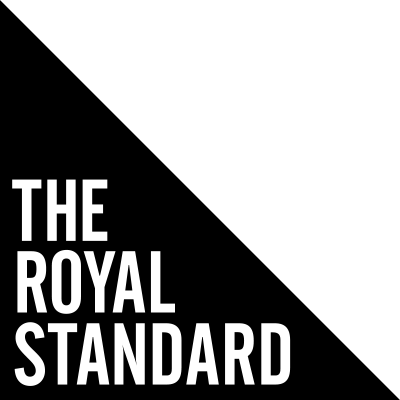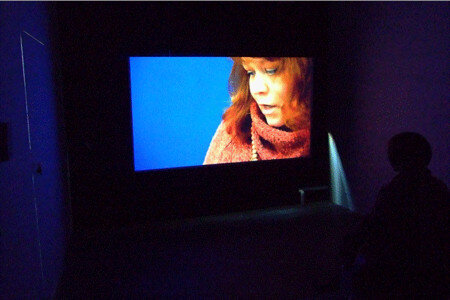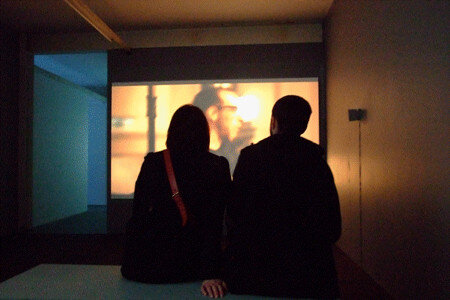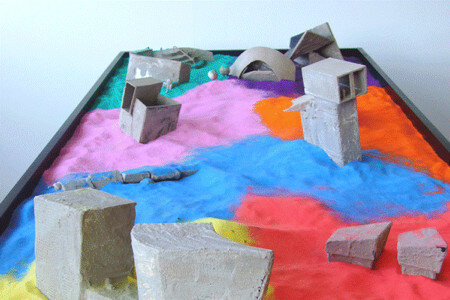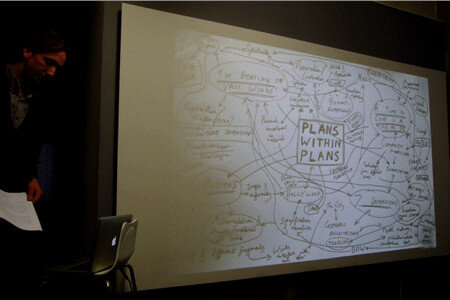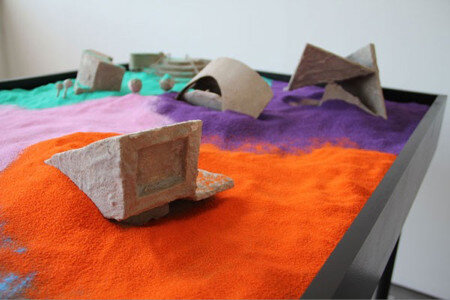The fabric of Whitby’s work appears to be on the verge of collapsing – degenerating into its constituent parts. Through the use of hand-made objects, props and amateur performances, Whitby invokes the monumental whilst undermining the implacable facades of such structures and images in an age of fake democracy. The exhibition’s title was lifted from the dialogue in David Lynch’s 1984 film Dune, referring to the scheming nature of one character who is exposed as engaged in layered plots. Whitby’s work often foregrounds the artist’s own position as maker and as complicit agent within the systems that the work seems to critique. Consisting of video, writing, printed posters and sculpture, the exhibition was concerned with layers of meanings and interpretations.
Whitby showed three videos. Using different modes of presentation and modelling, they explored the commonality between architectural pre-visualisations, cinematic special effects, stage-set designs and the propositions of contemporary advertising. A Time to Love and a Time to Die adopted the title of a Hollywood melodrama from 1958 by German director Douglas Sirk. In Whitby’s video, computer generated 3D models draw inspiration from the cover of the soundtrack of the film; the embrace of two lovers is repeatedly rendered in abstracted blocks and cylinders. The Beating of Vast Wings was made in London in 2011 and takes the story of Richard Strauss’ 1905 opera Salome which Whitby juxtaposes with a narrative of urban renewal in London. A new video made in Liverpool with local actors was a response to the new architecture of the city. Each actor improvises with models made by the artist; they play the role of architect, describing their invented aspirations for the building’s designs.
